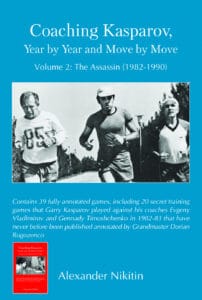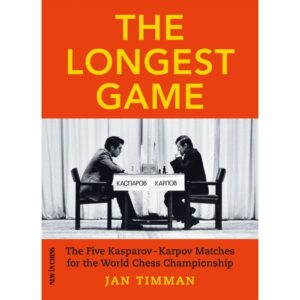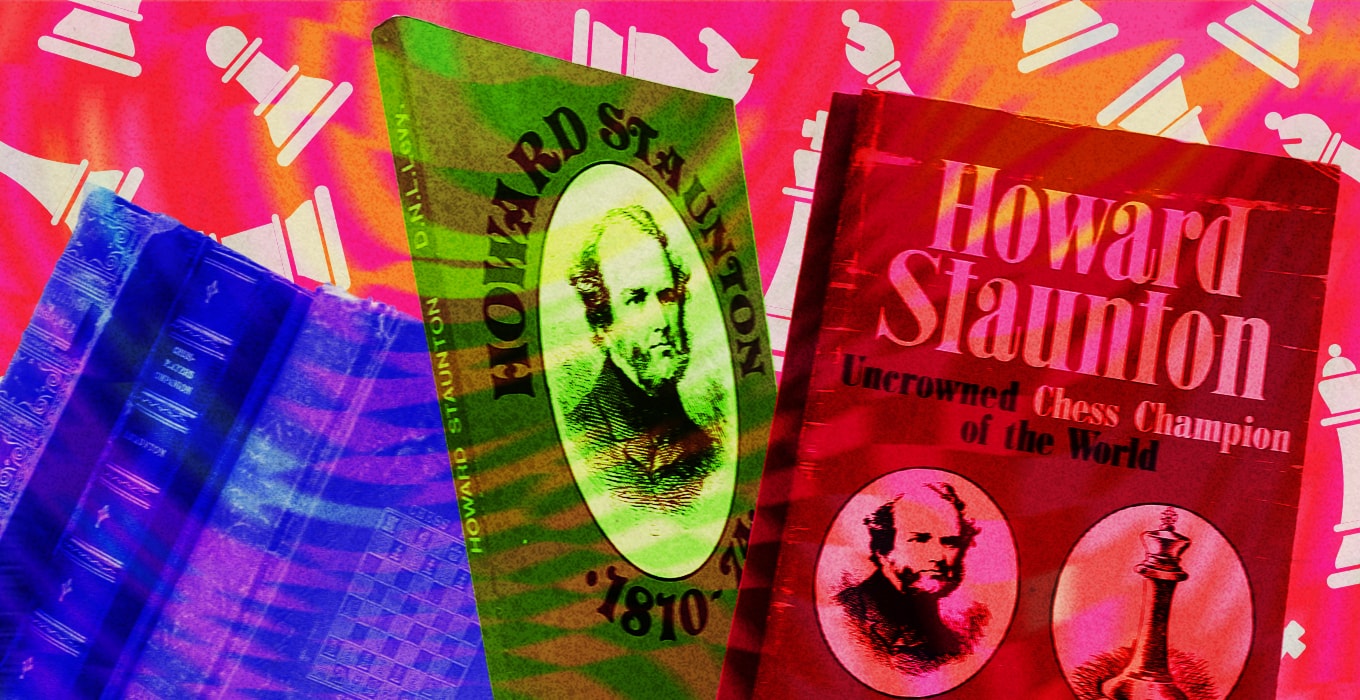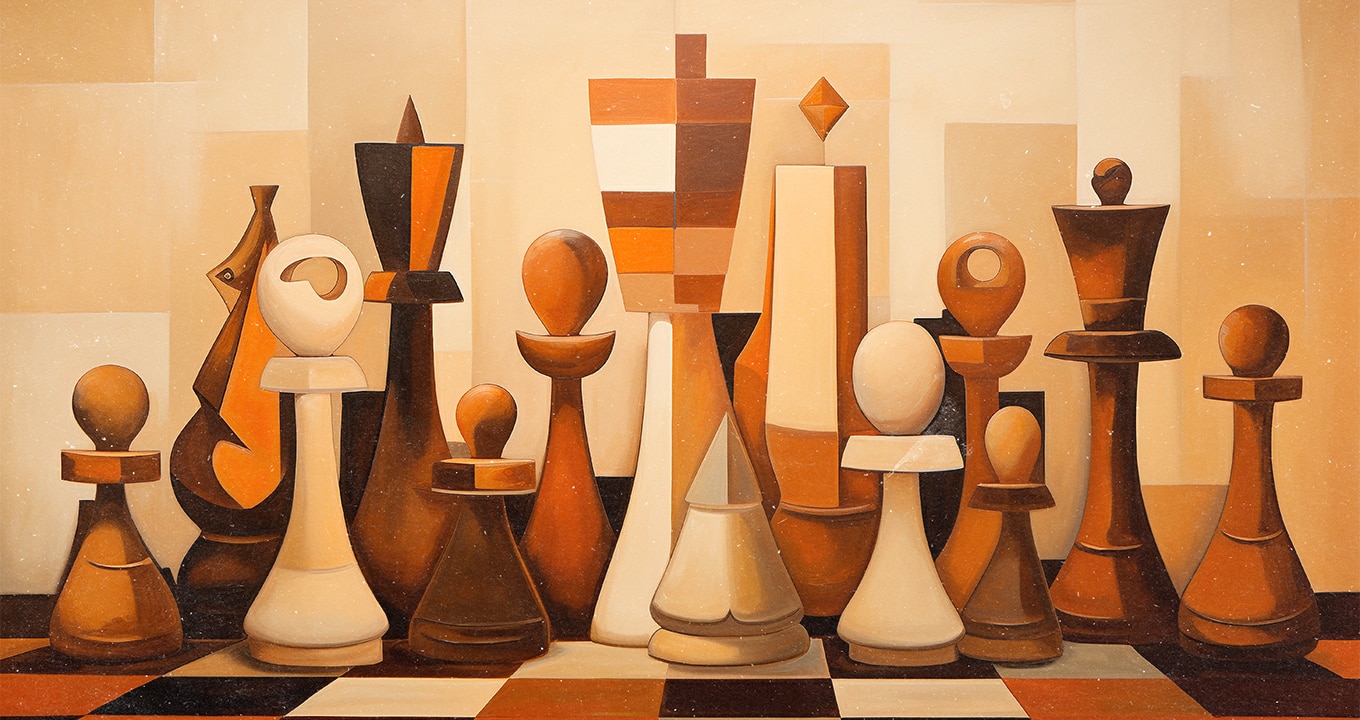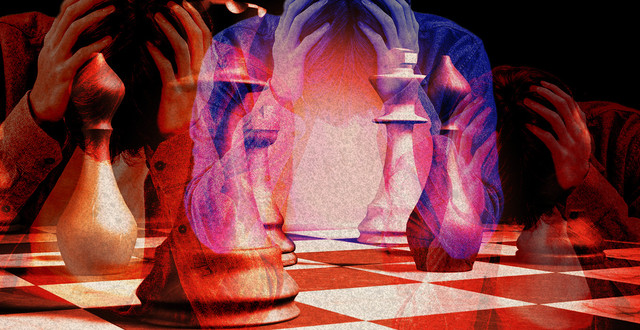Today we continue with our celebration of New in Chess Magazine and the new sale of New in Chess courses, with the second part of our series on Great Moments in Chess, leading up to the moment when Garry Kasparov seizes the crown.
Garry Kasparov was World Champion for 15 years. Much to his chagrin, this isn’t the record tenure, as both Emanuel Lasker (27 years) and Alexander Alekhine (17 years) stand above him.
It is difficult to think of Kasparov having to go through the qualifying stages of the World Chess Championship. Back then, the system was very different. First, a player had to qualify for one of the three very competitive Interzonal tournaments.
Candidate Kasparov
Kasparov won the 1982 Moscow Interzonal, ahead a star-studded cast, including Alexander Beliavsky, former champion Mikhail Tal, Ulf Anderssen and Efim Geller. Interzonals were very serious tournaments. This one lasted 13 rounds and Kasparov scored an impressive 10/13 to finish one and a half points ahead of Beliavsky.
Next, there came the first of three rounds of the Candidates matches. Kasparov was paired with Beliavsky in the first round and even though the match was close for some time, a final burst of two straight wins allowed Kasparov to progress with a 6-3 victory.
The Candidates Semi-final brought a massive clash with Viktor Korchnoi, who had pushed Anatoly Karpov hard in the very close matches of 1974 and 1978, before ultimately being outgunned by the World Champion in the 1981 title match. Nevertheless, Korchnoi, with more match experience than any other player, was in control for the first half of the match. Kasparov again finished strongly, with four wins from the last six game, to record a significant 7-4 victory.
Standing between Kasparov and a title with Karpov was, incredibly, Vasily Smyslov – who had been World Champion from 1957 to 1958. Kasparov was the clear favourite in this battle of age against youth and, even though Smyslov gave a good account of himself, Kasparov powered through to another victory, by a score of 8.5-4.5.
This match was played in the Spring of 1984, meaning Kasparov had already spent two years battling his way through to play Karpov.
The First Karpov – Kasparov Match
Anatoly Karpov had been champion of the world for 10 years. At 33, he was still very much in his prime. Kasparov, 21, was aiming to become the youngest champion in history. Both players were on excellent form as they sat down to play the first game of the match on 10 September 1984, in Moscow.
The rules back then required a player to win six games to take the title. Draws did not count. Opinion was divided, at the time. Traditionalists were in Karpov’s favour; younger chess fans saw Kasparov as a change to a much more dynamic style of chess.
Karpov’s Early Dominance
The dreams of the young started to become nightmares, when Karpov raced to a 4-0 lead after just nine games. Various weaknesses in Kasparov’s game were ruthlessly exploited. Karpov then made a mistake in his match strategy, electing to play numerous short draws instead of pushing for victory. However, after 17 consecutive draws, he then won a fifth game, to lead 5-0 after 21 games.
Kasparov on the Brink of Disaster
How would a young player react to losing such a match by 6-0? Would he have the maturity to recover and the strength to battle his way through the next series of Candidates matches? It looked like we were going to find out, but Karpov became cautious once more, which backfired badly.
Kasparov finally won a game. This victory, in game 32, was his first-ever win against Karpov. 14 more draws followed. With hindsight, Karpov should have changed his match strategy, played longer games and mixed things up a lot more – but he was also getting very tired.
A Finale – of Sorts
Unbelievably, Kasparov won games 47 and 48, to pull the score back to 5-3. Karpov was clearly struggling; he was unrecognisable in the brace of defeats. Would Kasparov be able to keep the wins coming?
Unfortunately, we shall never know – because the match was aborted by FIDE in extremely controversial circumstances. This is all a story for another day – but the upshot of the decision is that the players had to start a new match in 1985, with the slate wiped clean. After an extraordinary battle lasting 48 games and five months, the score was suddenly back to 0-0.
The Second Karpov – Kasparov Match
Seven months later and the players started their battle all over again. The rules had changed; this time it was a match of 24 games. Karpov would keep his title at 12-12.
It was a tight start. Kasparov won the first game, but Karpov hit back strongly, winning games four and five. Kasparov equalised in game 11 and then there were four consecutive draws. Karpov, of course, could afford to keep on drawing, but Kasparov had to try for more.
Kasparov Pulls Ahead
Kasparov won two excellent games (16 and 19) to leave Karpov in big trouble. Both players must have been feeling the pressure at this point. There were mistakes in the next few games and Karpov pulled one point back by winning game 22. One more draw followed in game 23, setting up a very tense final game.
Game 24: The Sicilian Defense
Kasparov’s Sicilian Defense was extremely difficult to breach. On the other hand, Karpov was generally very impressive on the white side of 1.e4 c5.
9 November, 1985. It is quite clear what each player needs. Karpov, the defending champion, needs to win the last game of the match to retain his title. Kasparov, the challenger, needs to avoid defeat to become the youngest champion.
This was not the moment to play a solid Petroff Defense or to try something unexpected. Both players were very much ready for a sharp struggle and the opening moves were no surprise: 1.e4 c5.
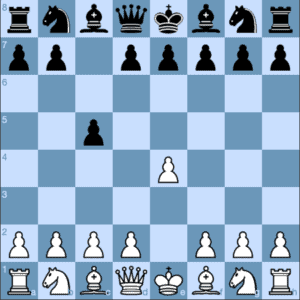
The Sicilian Defense
A few moves down the line, Karpov shows he wants to stick with his trademark 6.Be2 against the Najdorf Variation and Kasparov transposes to his great favourite, the Scheveningen Variation, with 6…e6. Nobody ever liked to play the standard 6…e5 against Karpov. He specialised in obtaining a small edge and gradually crushing the opponent.
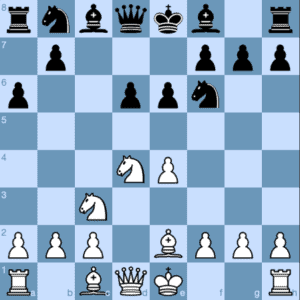
The battle lines were drawn very quickly. Karpov was clearly intent on an all-out assault, while Kasparov was hoping the hedgehog spines of the Scheveningen would keep White’s attack at bay.
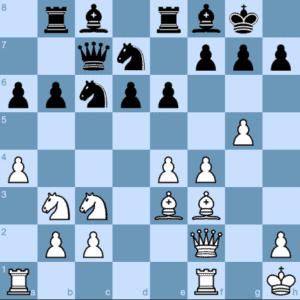
Fast forward a few more moves and, suddenly, Kasparov breaks has broken out with 25…f7-f5.
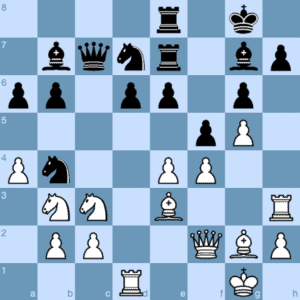
The position has exploded and history is about to be made. This is definitely more of a Kasparov position than something Karpov will feel entirely comfortable playing.
Indeed, once Kasparov played 34…Nxc2, the writing was definitely on the wall.
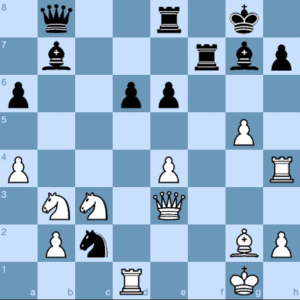
Karpov’s queenside collapses completely and the game is only heading for one result.
The Moment
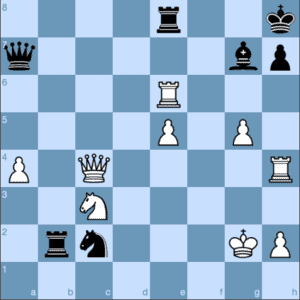
Black to Play
Despite the apparent activity of Karpov’s pieces, he is losing. Not only is a piece down, but Kasparov now has the choice between a number of winning moves.
Kasparov chose 24…Nd4+, winning more material with a discovered check.
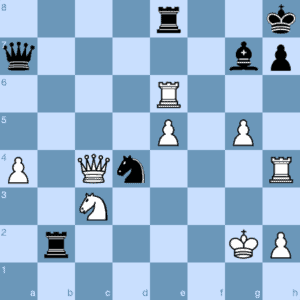
Kasparov Seizes the Crown
Thus, Kasparov, at 22, became the youngest world champion of chess and ended Karpov’s 10-year reign. The final score was 13-11 to Kasparov.
Play Through the Game
This was by means the end of the classic rivalry between Karpov and Kasparov. They would go on to contest three more very close title matches and would be almost permanent rivals at top tournaments.
Such was the impact of the result that books are still being written about the great rivalry.
These two were both contenders for the annual English Chess Federation Book of the Year Award.
There will be another instalment of Great Moments in Chess tomorrow. Meanwhile, the New in Chess Classic is now into the Knockout phase. This exciting tournament can be followed live on chess24.



